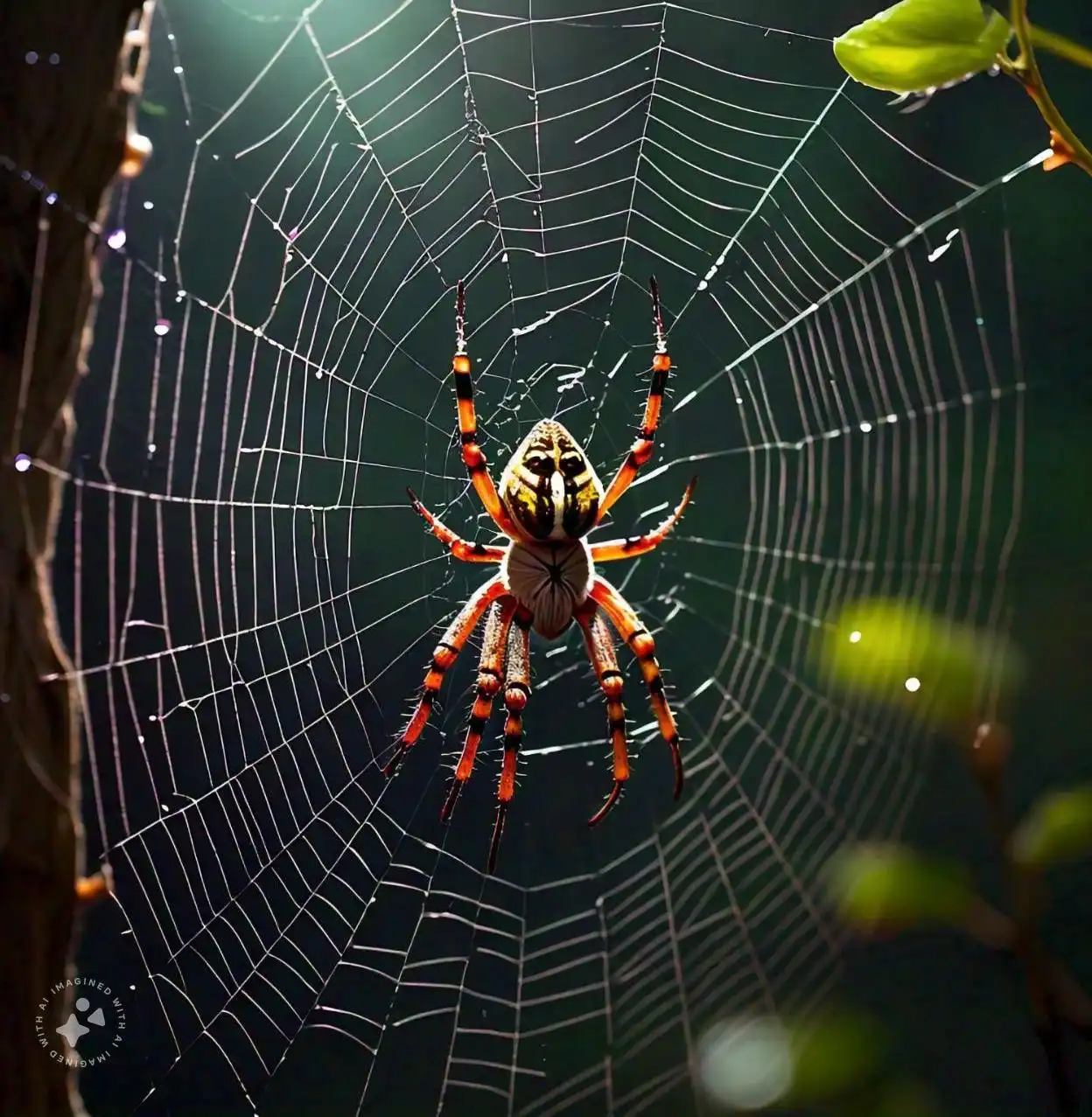When you think of a spider, what’s the first thing that comes to mind? Maybe it’s their eight legs, or perhaps it’s the intricate webs they spin. But here’s a question that might have crossed your mind: why don’t spiders get stuck in their own webs? After all, these webs are sticky enough to trap unsuspecting insects, so why not the spiders themselves? Let’s dive into the fascinating world of spiders to find out!

The Marvel of Spider Silk
Spider silk is one of nature’s most incredible materials. It’s strong and stretchy and can be used to create those beautiful webs we often see glistening in the morning dew. But not all of the silk in a spider’s web is sticky. In fact, there are different types of silk that spiders produce for different purposes.
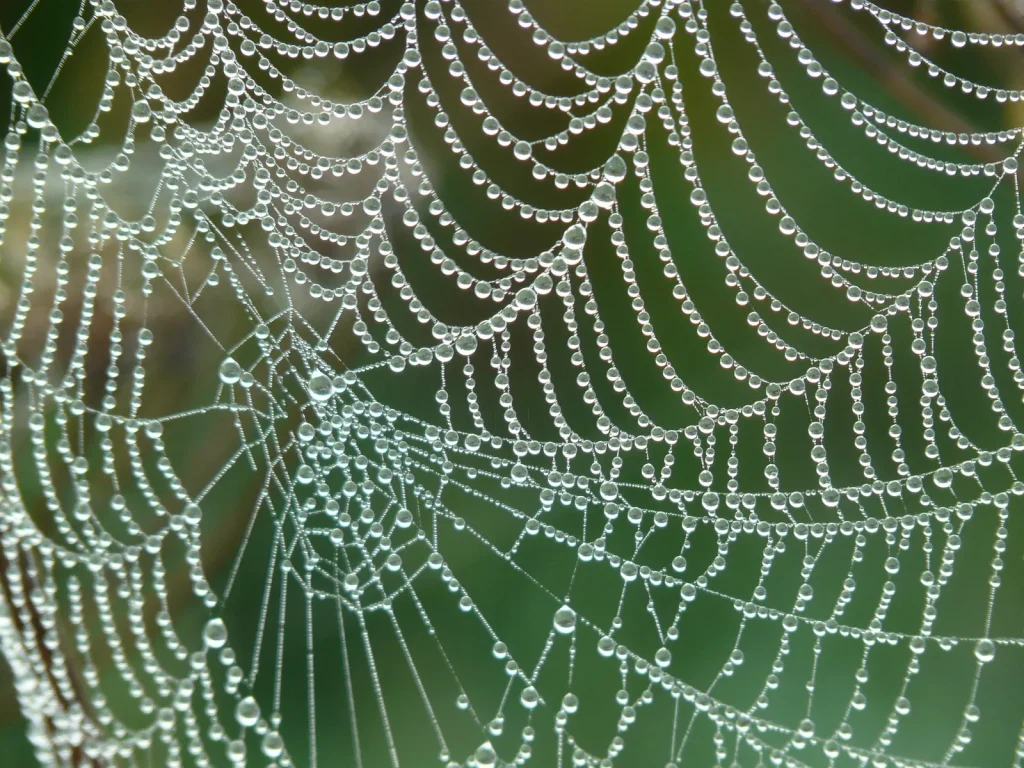
- Frame Silk: This is the non-sticky silk that forms the main structure of the web. It’s like the framework of a building, giving the web its shape and support.
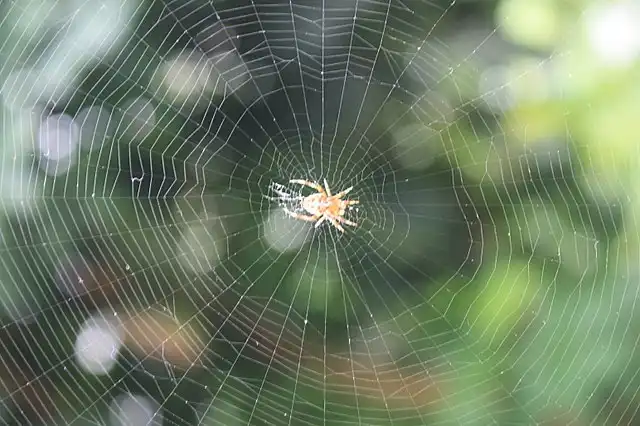
- Sticky Silk: This is the silk that traps the prey. It’s covered in tiny droplets of glue-like substance, making it extremely sticky. When insects fly into the web, they get caught in this sticky silk and can’t escape.

The Role of Spider’s Legs
One of the main reasons spiders don’t get stuck in their webs is because of how they use their legs. A spider’s legs are specially adapted for walking on its web without getting trapped. Here’s how they do it:
- Tiny Hairs: Spider legs are covered in tiny hairs known as setae. These hairs help to minimise contact with the sticky silk, reducing the chances of getting stuck. The setae act like little brushes, allowing the spider to move across the web with ease.
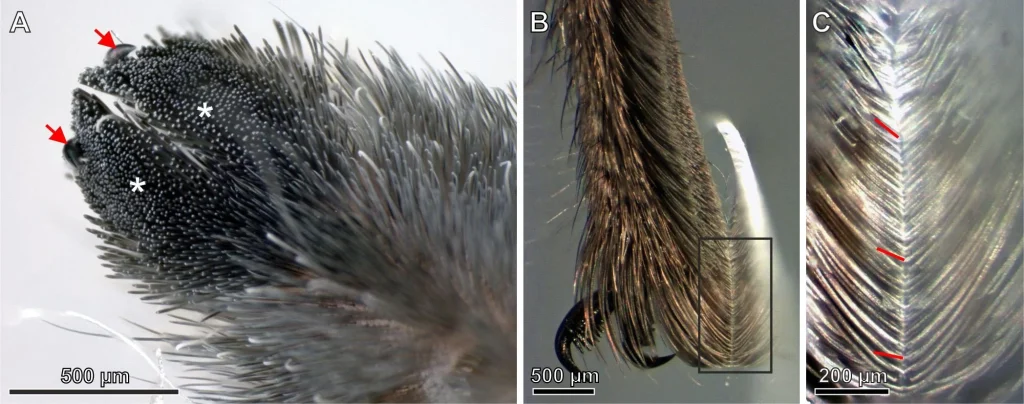
- Oily Substance: Some spiders produce a special oily substance that coats their legs. This oil acts as a lubricant, preventing the sticky silk from clinging to them. Think of it like putting butter on your hands before handling something sticky—it makes it harder for the sticky stuff to grip onto your skin.
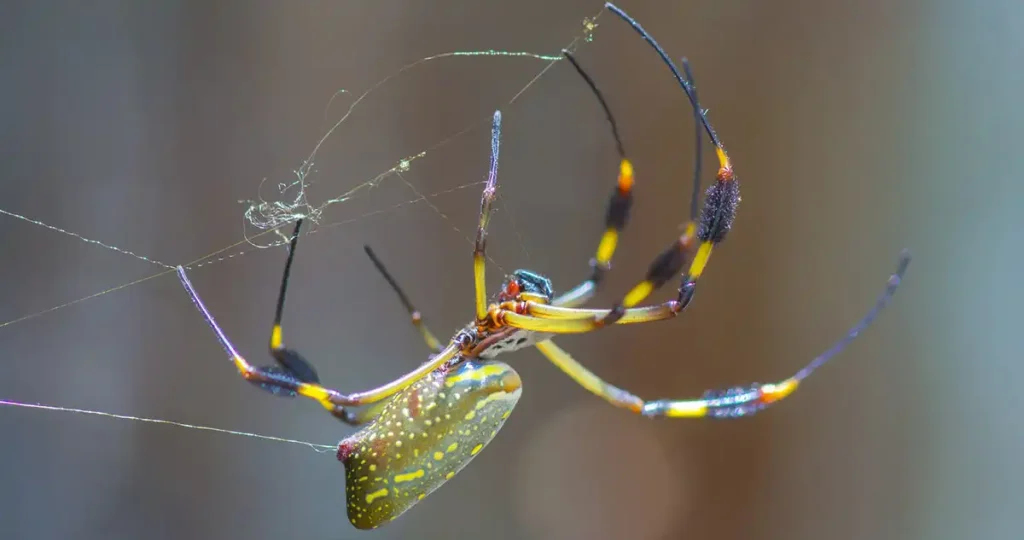
- Precision Movement: Spiders are incredibly precise in their movements. They know exactly where to place their feet to avoid the sticky threads. It’s almost like they have a built-in map of their web, allowing them to navigate it without getting caught.

The Spider’s Dance
When you watch a spider on its web, you might notice that it moves in a sort of dance-like manner. This isn’t just for show—every step is carefully calculated. Spiders are well aware of which threads are sticky and which aren’t. They step on the non-sticky silk, avoiding the sticky parts altogether. This careful navigation is one of the key reasons they don’t get stuck.
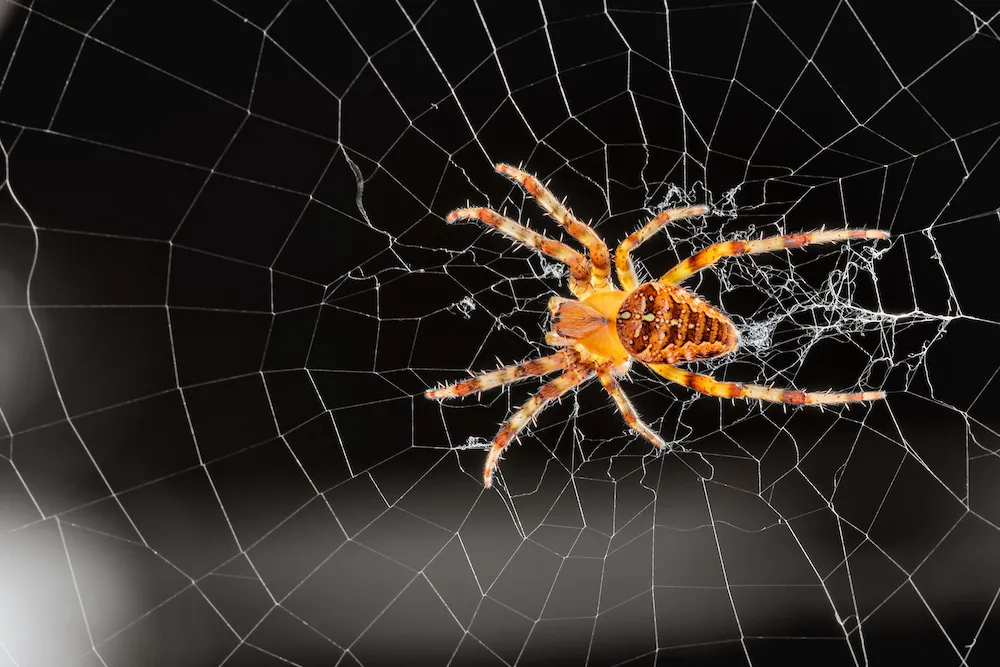
A Special Adaptation
Some species of spiders have evolved even further to avoid getting stuck in their webs. For example, orb-weaving spiders, which create those classic spiral webs, have a unique adaptation: they regularly remove and replace the sticky threads in their webs. By doing this, they ensure that any silk that might have lost its stickiness is renewed, keeping the web in perfect condition for trapping prey without risking getting caught themselves.
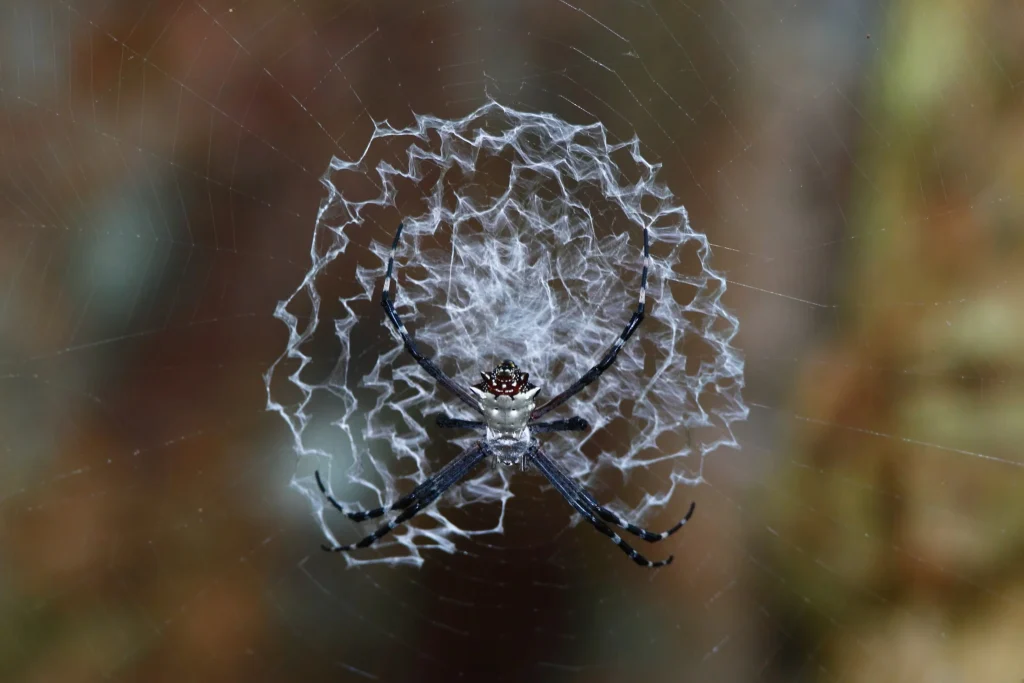
Spider Web Maintenance
Spiders are also excellent at maintaining their webs. They regularly inspect and repair any damaged sections. During this process, they may remove old or damaged sticky silk, reducing the chances of accidentally getting stuck. It’s a bit like a builder checking a bridge for any weak spots and fixing them before they become a problem.
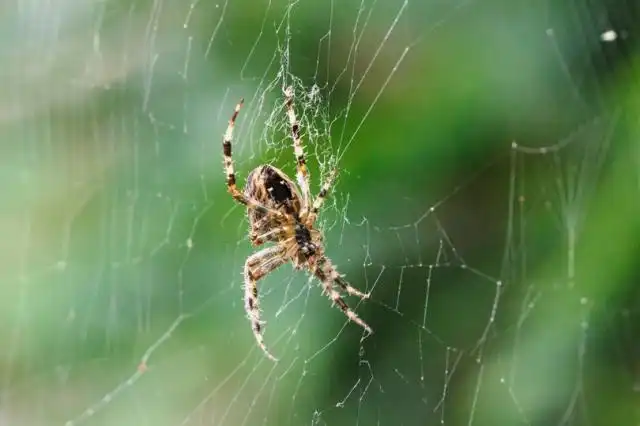
The Importance of Silk Types
As mentioned earlier, not all spider silk is the same. Spiders produce different types of silk for different parts of the web. The sticky silk is used only in specific areas, usually in the spiral sections where insects are most likely to get trapped. The rest of the web, including the spokes and the frame, is made of non-sticky silk. This clever use of different silk types means the spider can move freely across most of its web without worrying about getting caught.

Spider Anatomy
The anatomy of a spider also plays a significant role in preventing them from getting stuck in their webs. Spiders have a special set of claws at the end of their legs, which they use to grip the silk. These claws allow them to grasp the threads firmly and avoid contact with the sticky silk. Additionally, their legs are highly flexible and can bend in ways that help them navigate the web efficiently.

Chemical Defence
Some scientists believe that spiders might have a chemical defence against their own webs. There is evidence to suggest that the spider’s body produces chemicals that prevent the sticky silk from adhering to them. This could be another reason why they don’t get trapped, even if they accidentally touch the sticky threads.

Other Insects and Webs
You might be wondering if any other insects can avoid getting stuck in spider webs. The answer is yes! Some insects, like certain species of moths, have scales on their wings that prevent them from getting caught in sticky webs. These scales can detach easily, allowing the moth to escape if it gets trapped. However, this is more of an exception than the rule—most insects are not as lucky and end up as the spider’s next meal.

Can Spiders Get Stuck?
While spiders are highly skilled at avoiding getting stuck in their own webs, it’s not impossible for them to get caught. If a spider is injured, sick, or just unlucky, it could accidentally touch the sticky silk in the wrong way and become trapped. However, this is a rare occurrence, as spiders are usually very careful and aware of their surroundings.

Conclusion
Spiders are fascinating creatures with incredible adaptations that allow them to navigate their sticky webs without getting stuck. From their tiny leg hairs and oily coatings to their precise movements and specialised silk, everything about a spider is designed to keep it safe from its own traps. The next time you see a spider on its web, take a moment to appreciate the amazing skills and adaptations that allow it to move so effortlessly through its sticky creation.
For more interesting articles, please visit www.kidzherald.com

